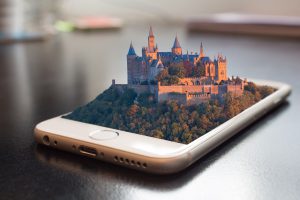Technology – in the form of gadgets and applications – has penetrated every aspect of our lives. Young and old alike use technology for every task, from the mundane to the profound. There’s a gadget for this, there’s an app for that – we commonly hear these words in everyday conversation. It is no surprise then that the field of education has come under the same onslaught.
Everyone – students, parents, teachers, schools, private organisations, governments – seems to have a say in how technology will transform education. Schools assess their own progress based on technology integration. Parents assess the quality of schools based on technology integration. Students think that more technology means the school is advanced. Private organisations come up with various products to influence students, parents, and schools. Governments come up with myriad schemes to bring rural schools up to date by providing them with gadgets.
Amidst all this ‘hungama’, it is very easy to forget the primary purpose of a learning experience. As a teacher and educator who cares deeply about children’s well-being, I use a rule of thumb to ascertain the relevance of technology in a given situation. I share the rule here, for the benefit of other teachers and parents out there. Use it for your own benefit and for your children’s sake.
What is technology?
Before jumping into using it, be aware of what the technology is. Is it a smart board, a tablet, a computer, a smartphone? Or is it an application – a video, an animation, an infographic – that can be used on any device? Children have a greater awareness of what is available so they can insist that parents give them some specific gadget. Be wary if your child insists on using your iPhone even when the family computer is available. This leads to the next question.
What is the technology used for?
Educate yourself on what the technology is used for, once you are aware of what the technology is. Is a tablet used as a substitute for a textbook? Is the smart board in the classroom used to show multimedia content or used to project textual content on a large screen? What about your child watching videos non-stop on the computer or smartphone – educational or otherwise?

Is using technology adding value?
This is by far the most important question to answer.
If we use a tablet as a substitute for a textbook, the technology is not adding any value – only the medium of information dissemination has changed. The child gets the same information from the text book without the harm of the screen light.
If a smart board in the classroom is used to show multimedia content that is otherwise not accessible to children, then it adds value. On the contrary, if textual content is being projected, then children are better off reading from their own books.
If your child is watching videos continuously on the computer or smartphone with an excuse that they are educational videos, then how is the video better? If the purpose is to observe an acid-base neutralization reaction, then conducting the experiment hands-on is the best way. It is simple enough to conduct with vinegar and baking soda in a household kitchen. It is also safe enough for a middle school student to experiment on their own with adult supervision. No amount of jazz in a video can substitute for the hands-on experience here.
Alternatively, when the purpose is to understand the structure and function of the heart, an animation of the heart and circulatory process certainly adds value.
EdTech – Technology for Education
We use EdTech or “Education Technology” as the collective name of technology used and applied in Education. You can use it as a tool and catalyst for learning and then reinforcing the learning.
Your child may already be using EdTech in the form of text and video tutorials, immersive content, puzzles and so on. EdTech is also about using technologies like Machine Learning (ML), Augmented Reality (AR), and similar technologies to give personalised content. You can also get contextual content (based on the location, user, learning speed and so on) with the help of such technologies.
We at NumberNagar® are using EdTech to create interesting applications which can augment the conventional way of learning.
Conclusion
Convince yourself of the purpose that is being served using technology. It should lead to an enhanced learning experience. As with everything else, context plays an important role here. Ask yourself the questions listed above before blindly going behind technology. Once you decide that the use of technology adds value in the chosen context, go ahead and use it. Use moderation and discretion in the extent to which you use it, especially when young children are involved. Technology can be addictive and “too much is too bad” even when the intentions are good. Use EdTech to your advantage to assist in and reinforce your learning.
Dr. Soumya Sreehari
Latest posts by Dr. Soumya Sreehari (see all)
- To drink water or not to drink – that is the question - 11 June 2021
- Puzzles for fun and learning - 28 May 2021
- A questioning mind is a thinking mind - 14 May 2021
- Play and learn having fun with words - 7 May 2021
- 4 lessons to learn from the Montessori method - 30 April 2021


Edtech based format is largely based on technology platform usage. Hence, justifying the levels of imparting through Tech medium can definitely augment the children to grasp better. Always, it’s boon to have technology usage in a more eloquent way. Nice article…
Thank you, Srinivasan. You are right, technology usage in an intelligent way is a boon.
Good thoughts Soumya!
Thank you, Shaji.
Nice blog Dr.Sowmya….technology can definitely be an enabler provided we explore it for all good reasons and intention.
It can do wonders with ML / ARVRMR/gamification/simulation..innovation in learning.
Thank you, Dr. Arpita. I agree that technology can do wonders when used judiciously…